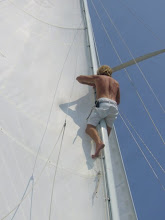Formed by the Ottawa Declaration of 1996, the Arctic Council serves as a “high level intergovernmental forum to provide a means for promoting cooperation, coordination and interaction...on common Arctic issues, in particular issues of sustainable development and environmental protection in the Arctic.” All eight Arctic nations are Council members. There is also a category for groups representing area indigenous peoples in two categories: (1) a single indigenous people resident in more than one Arctic state, such as the Inuit people or (2) more than one Arctic indigenous people resident in a single Arctic state.
The governance structure of the Arctic Council provides for a two-year rotating chairmanship among member nations. Senior officials of Arctic nations meet at least every six months while Arctic Council Ministerial Meetings are held biannually. In addition, the Arctic Council sponsors working groups and allows observer status to non-Arctic states, non-governmental organizations and global as well as regional inter-governmental and inter-parliamentary organizations.
The Arctic Council is a forum only for decision-shaping, not a decision-making. While it is the only truly circumpolar body and a much-needed forum for discussion on regional issues, the Arctic Council in essence serves as a bouncing board for knowledge, guidelines and best practices within the Arctic. Its role could be strengthened by formally sanctioning observers and encouraging global players such as China to assume observer status. In addition, the Arctic Council could provide observers with a broader role in the operations of the Council.
The Arctic Council has assumed or created six critical working groups with individual missions related specifically to the Arctic. The Arctic Contaminants Action Program seeks to reduce the emission of pollutants in order to reduce identified pollutant risks. The Arctic Monitoring and Assessment Program provides scientific advice and information to the Arctic governments related to the status of and threats to the Arctic region. The Conservation of Arctic Flora and Fauna Arctic working group helps to promote sustainability in the region, in particular the conservation of Arctic biodiversity. The Emergency Prevention, Preparedness and Response working group is designed to deal with the prevention of, planning for and best response to environmental disasters in the region. Its work has dealt primarily with hydrocarbon extraction and radiological best practices, in addition to more recent duties including natural disasters. However, it is important to note that the Emergency Prevention, Preparedness and Response working group is not a response agency. The fifth working group, Protection of the Marine Arctic Environment, looks to address policy and non-emergency pollution prevention and control measures to better protect the Arctic marine environment. Finally, the Sustainable Development Working Group seeks to further environmentally sustainable Arctic development, working with local communities on projects related to, for instance, youth education, tourism and health.
The creation and success of these six working groups is evidence that despite the limited history of international cooperation in the Arctic, the eight Arctic nations recognize that it is in their own as well as the global community's mutual interest to preserve and protect this fragile region through sustainable, educated and manageable development. However, the rush for resources will undoubtedly introduce tensions into this relationship that may be beyond the scope of the Arctic Council and its working groups' capacities.
03 October 2010
Subscribe to:
Post Comments (Atom)




No comments:
Post a Comment